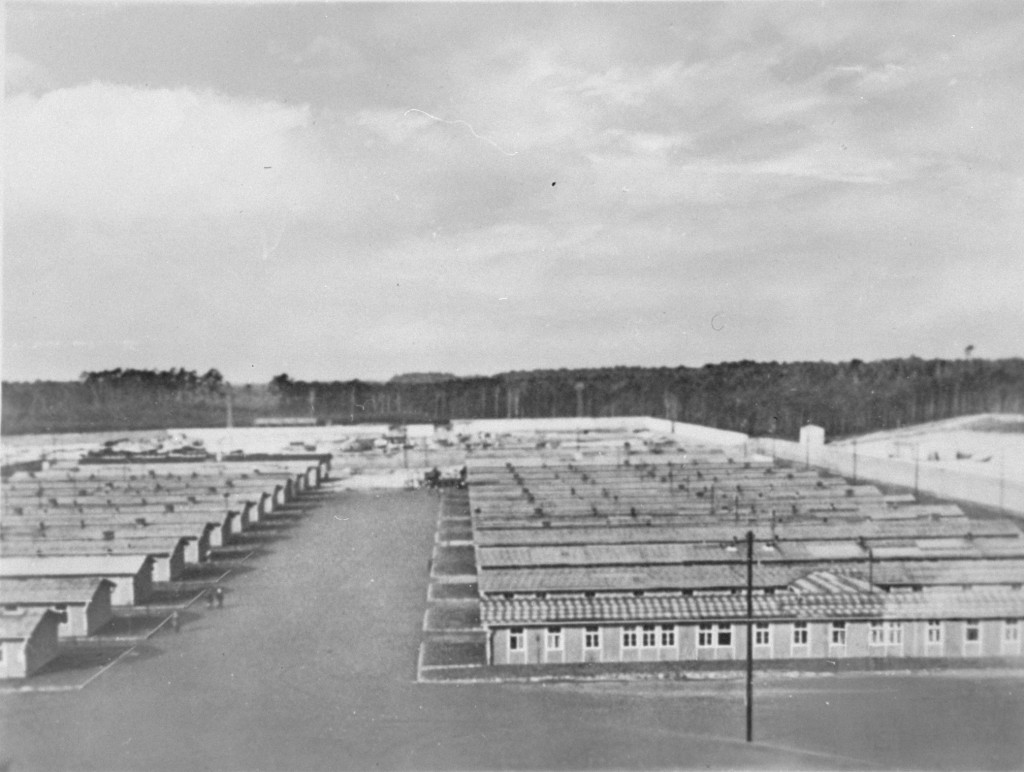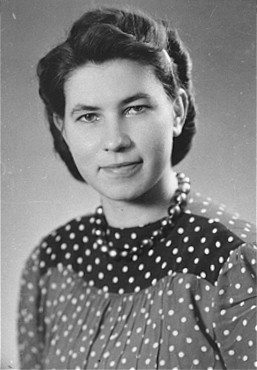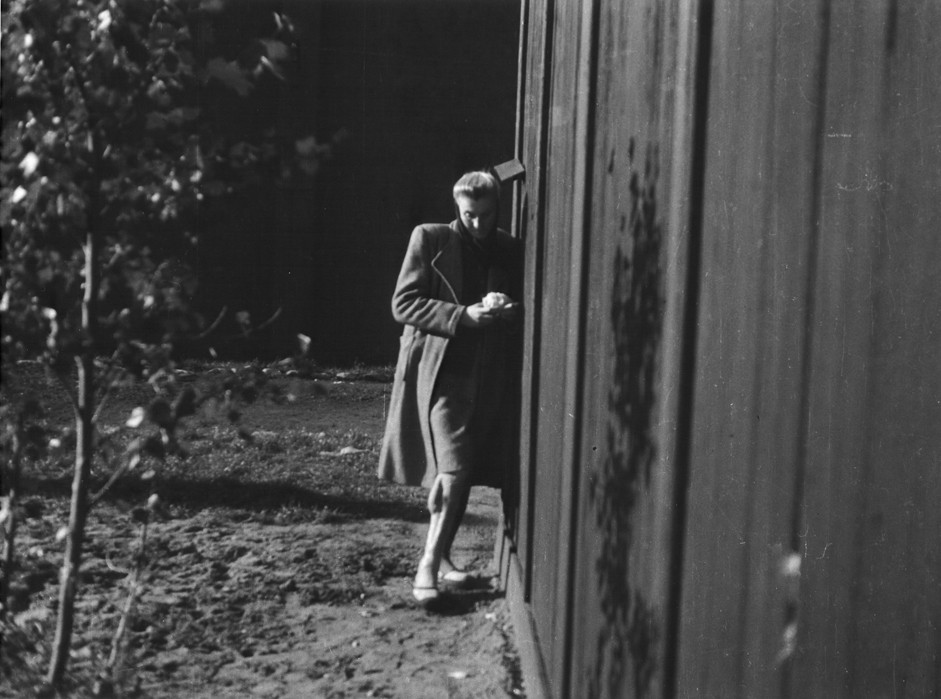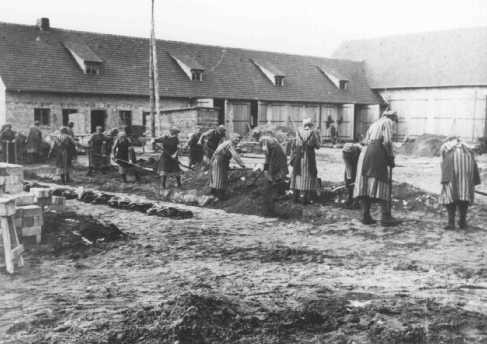
Ravensbrück
Between 1933 and 1945, Nazi Germany and its allies established more than 44,000 camps and other incarceration sites (including ghettos). The perpetrators used these locations for a range of purposes, including forced labor, detention of people deemed to be "enemies of the state," and mass murder. Millions of people suffered and died or were killed. Among these sites was the Ravensbrück camp for women.
Main Camp
The Ravensbrück concentration camp was the largest concentration camp for women within Germany's prewar borders. In the concentration camp system, it was second in size only to the women's camp in Auschwitz-Birkenau (which was in German-annexed Poland). After the closure of the Lichtenburg camp in 1939, Ravensbrück was also the only main concentration camp, as opposed to subcamp, designated almost exclusively for women.
German authorities began construction of the camp in November 1938, at a site near the village of Ravensbrück in northern Germany. It was about 50 miles north of Berlin. In April 1941, the SS authorities established a small men's camp adjacent to the main camp.
In November 1938, SS authorities transported about 500 male prisoners from the Sachsenhausen concentration camp to the proposed site to construct the Ravensbrück camp.
Prisoners in the Camp
The first prisoners interned at Ravensbrück were approximately 900 women whom the SS had transferred from the Lichtenburg women's concentration camp in Saxony in May 1939. By the end of 1942, the female inmate population of Ravensbrück had grown to about 10,000. In January 1945, the camp had more than 50,000 prisoners, mostly women.
The inmates came from over 30 countries. The greatest numbers came from Poland (36%), Soviet Union (21%), the German Reich (18%, includes Austria), Hungary (8%), France (6%), Czechoslovakia (3%), the Benelux countries (2%), and Yugoslavia (2%).
SS authorities interned various types of prisoners in Ravensbrück, including
- political prisoners
- “asocials”—among the prisoners deemed to fit this category were many Roma (Gypsies)
- Jews
- Jehovah's Witnesses
- "criminals"
- "work-shy"
- "race defilers"
The numbers of prisoners in each of the above groupings varied greatly throughout the camp's existence.
Camp Administration
The camp leadership was divided into five departments: the commandant's office, political department, "protective custody" camp, administration and camp doctor. SS Colonel Günther Tamaschke served as the commandant of Ravensbrück from December 1938 until April 31, 1939. SS Captain Max Koegel officially replaced Tamaschke as camp commandant on January 1, 1940. On August 20, 1942, SS Captain Fritz Suhren took over as camp commandant and held the position until the end of April 1945.
Aside from the male SS administrators, the camp staff included only female guards assigned to oversee the prisoners. These female guards were not members of the SS, but were members of the so-called "female civilian employees of the SS" (weiblichen SS-Gefolges). Beginning in 1942, Ravensbrück also served as one of the main training camps for female SS guards.
Conditions in the Camp and Mistreatment of Prisoners

The main camp contained 18 barracks. Two of these barracks served as a prisoners' sickbay, two served as warehouses, one served as a penal block, and one functioned as the camp prison until 1939 when a separate prison was built. The remaining 12 barracks served as the prisoners' housing, in which prisoners slept in three-tiered wooden bunks. Each barrack had one washroom and toilets, but the sanitary conditions were poor and greatly deteriorated after 1943. Food rations for prisoners were meager at the outset, and the amount and quality of food the camp authorities allotted each prisoner decreased further after 1941. By January 1945 the barracks were horribly overcrowded. This overcrowding, aggravated by abominable sanitary conditions, resulted in a typhus epidemic that spread throughout the camp.

Periodically, the SS authorities subjected prisoners in the camp to "selections" in which the Germans isolated those prisoners considered too weak or injured to work and killed them. At first, "selected" prisoners were shot. Beginning in 1942, in accordance with “Operation 14f 13,” the SS transferred them to the sanitarium at Bernburg, which, equipped with gas chambers, had served as a killing center for people with physical and intellectual disabilities within the framework of the so-called "Euthanasia" Program of the Nazi regime. The SS sent around 1,600 female prisoners and 300 male prisoners to their deaths at Bernberg in the spring of 1942; around half of these prisoners were Jewish, at least 25 were Roma (Gypsies), and at least 13 were Jehovah's Witnesses.
Camp authorities initiated a second round of killings at such “euthanasia” killing centers later in 1942, continuing until 1944. During this phase, around sixty transports left Ravensbrück for the “euthanasia” killing center at Hartheim, near Linz, Austria with between 60 and 1,000 prisoners each. The SS staff also murdered prisoners in the camp infirmary by lethal injection or by transferring them to the Auschwitz-Birkenau killing center. In early 1945, the SS constructed a gas chamber in Ravensbrück near the camp crematorium. The Germans gassed between 5,000 and 6,000 prisoners at Ravensbrück before Soviet troops liberated the camp in April 1945.

Starting in the summer of 1942, SS medical doctors subjected prisoners at Ravensbrück to unethical medical experiments. SS doctors experimented with treating wounds with various chemical substances (such as sulfanilamide) to prevent infections. They also tested various methods of setting and transplanting bones; such experiments included amputations. The SS selected nearly 80 women, mostly Polish, for these experiments. Many of the women died as a result. The survivors often suffered permanent physical damage. SS doctors also carried out sterilization experiments on women and children, many of them Roma (Gypsies), in an attempt to develop an efficient method of sterilization.
In 1942 the SS began opening brothels in some of the concentration camps. Camp authorities sought to exploit the women forced to work in these brothels to reward male prisoners for meeting or surpassing production quotas. Most of the women forced to work in the brothels were prisoners from the Ravensbrück camp; their numbers are estimated at least 100. The camp authorities forced some prisoners to work in the brothel, while other prisoners "volunteered" after the camp authorities promised them preferential treatment or release from the concentration camp after six months. None of the women were released early from the camp as promised.
Subcamps

The SS required Ravensbrück prisoners to perform forced labor, primarily in agricultural projects and local industry. By 1944, Germany increasingly relied on forced labor for the production of armaments. Ravensbrück became the administrative center of a system of over 40 subcamps with over 70,000 predominantly female prisoners.
These subcamps, many of which were established adjacent to armaments factories, were located throughout the so-called Greater German Reich, from Austria in the south to the Baltic Sea in the north. Several subcamps also provided prisoner labor for construction projects or clearing rubble in cities damaged by Allied air attacks. The SS also built several factories near Ravensbrück for the production of textiles and electrical components.
The largest subcamps, which held over 1,000 prisoners, included Rechlin/Retzow, Malchow, Grüneberg, Neubrandenburg, Karlshagen I, Barth, Leipzig-Schönefeld, Magdeburg, Altenburg and Neustadt-Glewe.
Critical Thinking Questions
- To what degree was the local population aware of this camp, its purpose, and the conditions within? How would you begin to research this question?
- What questions are raised by the choices made by medical professionals at this camp? Has there been any impact on professional codes of conduct in the years after the Holocaust?
- How could the development of a system of concentration camps be a precursor to mass atrocity and genocide?
- Investigate the experiences of women under Nazi persecution.

